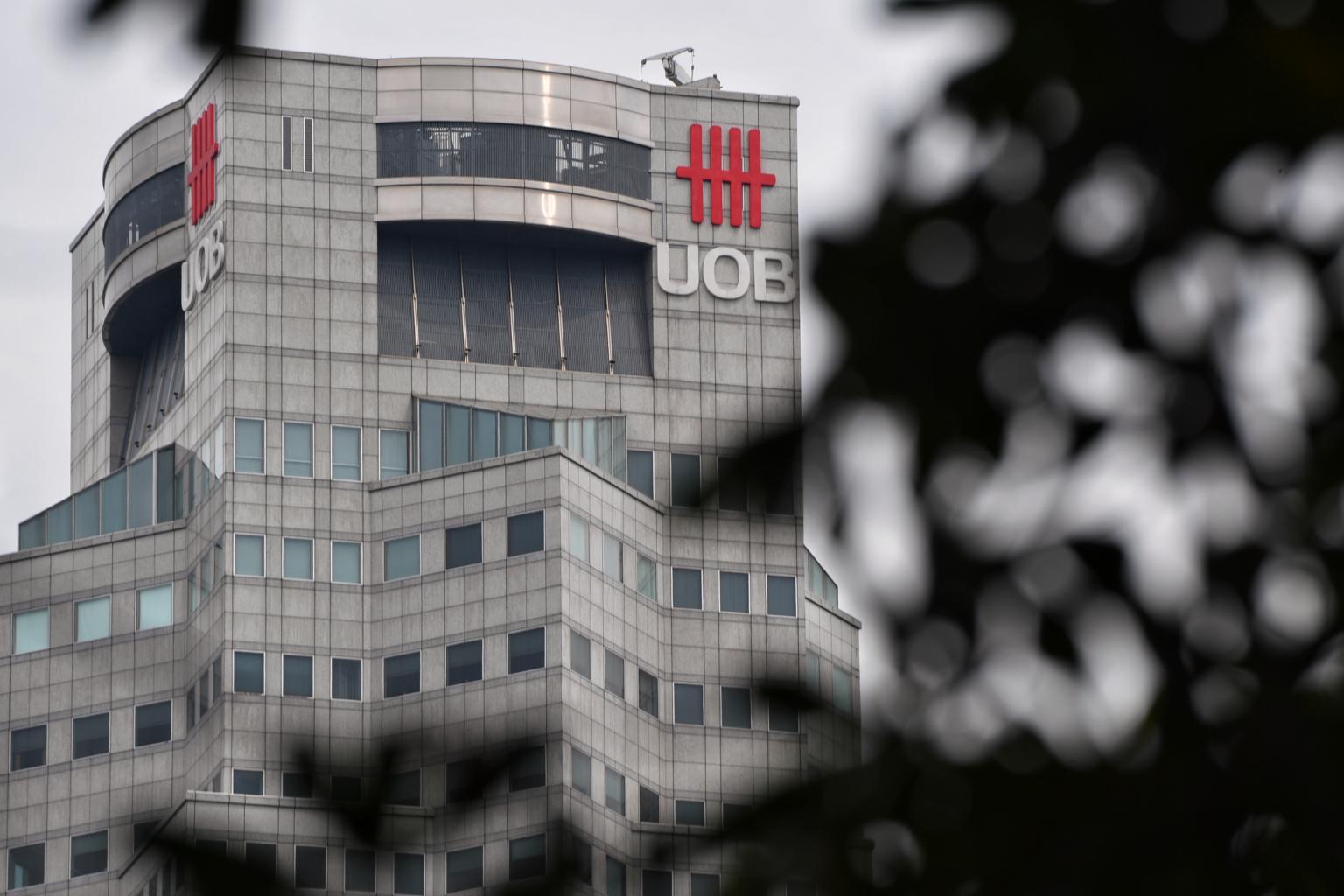UOB profit slides 40% on higher bad loan provisions
$668m figure in third quarter beats analysts' forecast of $641m
Sign up now: Get ST's newsletters delivered to your inbox

UOB's total operating expenses decreased 13 per cent to $1.01 billion on cost management.
ST PHOTO: KUA CHEE SIONG
Follow topic:
United Overseas Bank (UOB) posted a 40 per cent drop in third-quarter net profit to $668 million, from $1.12 billion a year earlier, as it built up on allowances for potential bad loans amid the Covid-19 pandemic.
Earnings were better than expected, topping the $641 million average forecast by analysts in a Bloomberg poll.
An additional $339 million in credit allowance for non-impaired assets was set aside to strengthen provision coverage, bringing total credit costs on loans to 68 basis points (bps) in the third quarter, from 23bps a year ago, the bank said in a statement yesterday.
UOB is the first of Singapore's local banks to report results for the third quarter. DBS Bank and OCBC Bank are set to post their earnings today.
UOB's annualised earnings per share was $1.55 for the quarter, a decrease from $2.62 a year ago.
Its non-performing loans (NPL) ratio improved quarter on quarter to 1.5 per cent from 1.6 per cent, as NPL formation stayed low coupled with more recoveries in the quarter, said UOB.
Operating profit rose 3 per cent quarter on quarter to $1.25 billion on improved margins and higher fees as economic activity gradually resumed.
Net interest income decreased 13 per cent year on year to $1.47 billion as effects from margin compression offset loan growth of 2 per cent.
Non-interest income fell 15 per cent to $786 million as business activities across corporate and retail customers declined. Trading and investment income declined 32 per cent to $210 million, largely due to lower net trading income.
Total operating expenses decreased 13 per cent to $1.01 billion on cost management.
UOB chief Wee Ee Cheong said the bank's asset quality is manageable and it is adequately provisioned even with the expiry of moratorium programmes across the region.
"While there are early signs of recovery across the global economy, the trajectory remains uneven and unclear. Given the evolving geopolitical and pandemic situation, we remain vigilant, especially in our key regional markets," he said.
UOB's net profit for the first nine months fell 33 per cent year on year to $2.23 billion. This was due to declining margins, slower customer activities and pre-emptive credit provisioning in the light of pandemic uncertainties.
For the nine months, the group's retail business recorded a 5 per cent fall in operating profit to $1.57 billion, on the back of lower interest rates. It was partly moderated by deposit growth and higher wealth income and expense management.
Operating profit from its wholesale banking business climbed 1 per cent to $2.37 billion, supported by loans, trade and treasury products which offset the impact of compressed margins.
Its global markets business posted a 69 per cent surge in operating profit to $428 million, buoyed by stronger trading performance and gain from sale of investment securities, as well as higher revenue from funding and liquidity management on the back of a sharp decrease in interest rates.
Mr Wee added that the Covid-19 pandemic has presented an opportunity for UOB to accelerate its omni-channel approach and open new customer service models.
Its mobile banking app UOB Mighty and digital bank TMRW have seen a rise in engagement and transactions, and it recently launched the UOB Infinity service for corporate customers, he noted.
He emphasised the importance of upskilling, improving staff productivity and adopting a flexible approach to work in the constantly changing operating landscape.
UOB shares closed at $19.80 yesterday, up 35 cents, or 1.8 per cent.

